It's fair to say I've had the ol' Sega Mega Drive on my mind the past few months between the temporary conclusion of the Mega Archive series and a recent playthrough of Jupiter's Picross S: Mega Drive & Master System Edition. To recap, I'm not someone who grew up with the system: I enjoyed it, usually vicariously, at a friend's house and even then it was usually a Sonic or perhaps a Golden Axe. As I was the SNES owner among my group of friends I was well taken care of when it came to RPGs - my favorite genre - but I never really had a sense of what that scene was like for the Mega Drive until I dug more into its back library in recent years.
Since my recurring May Marathoning feature tends to involve older RPGs, I'm dedicating this month to a bunch of Mega Drive classics I wanted to try out; this includes those that feel like they ought to be part of any self-professed RPG fanatic's history, and those that are obscure as all heck but piqued my interest nonetheless while perusing the system's catalogue. I'm currently aiming to get through as many in one month as I can, though realistically we're probably talking somewhere between five to eight games. I'm also avoiding the few I've already played - Shining Force 1, Shining in the Darkness, Beyond Oasis, and Fatal Labyrinth - and probably the whole Phantasy Star franchise. That's something I might want to run in its entirety someday, when I feel up to it. Expect to see some well-known games in here as well as a few esoteric beauties.
I'm not sure where Light Crusader sits on that spectrum - it's a Treasure game that's available on Steam, so I'm guessing more on the "famous" side - but that's where we're gonna be starting. Meanwhile, I'll be adding more entries to the table below as I publish 'em.
| Light Crusader | Crusader of Centy / Soleil |
| Shadowrun | Popful Mail |
| Tougi-Ou: King Colossus | Madou Monogatari I |
Mega May Madness: Light Crusader (Treasure, 1995)
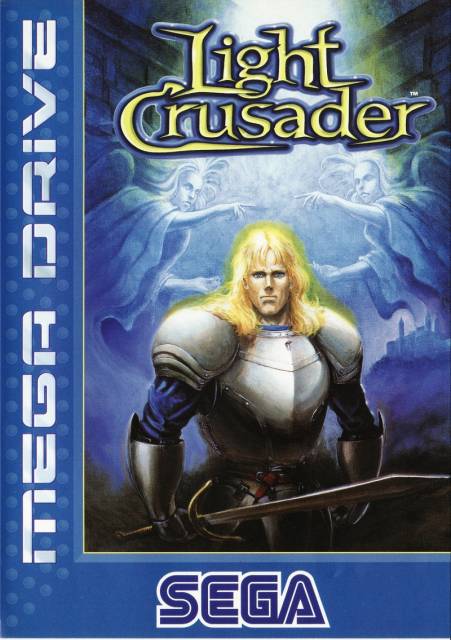
I think one coming-of-age (coming-of-AGES?) ritual that anyone digging into older Sega games eventually undergoes is a burgeoning respect for perennial oddballs and technical whiz kids Treasure, who between the 16-bit and 32-bit era left a trail of inimitable games from various genres, connected only by their bizarre penchants and off-beat sense of humor. On the Mega Drive alone they're responsible for the unpredictable platformer Dynamite Headdy, the raucous shooter Gunstar Heroes, the challenging boss-rusher Alien Soldier, and, uh, McDonald's Treasure Land Adventure, which I'm guessing is still way stranger than I remember. The last of their Mega Drive games was Light Crusader: on the surface, a fairly traditional dungeon-crawler action-RPG (though it's probably as much of an RPG as Zelda is, or maybe Illusion of Time) with an isometric perspective that, while uncommon, wasn't unheard of in Sega RPGs: Climax's Landstalker being another well-known adherent of that visual style. Since it was a Treasure game, I figured more had to lie beneath the surface - beyond the sprawling dungeon itself - which is why we're here.
The story of Light Crusader concerns the blond swordsman David, who is sent to the quiet town of Green Row to rest and recuperate. However, once there, he finds the overall mood of the town saturnine and fearful; people have been mysteriously disappearing for many weeks now, and the townsfolk are anxious they may be next. From talking to King Weeden and his subjects, David is inspired to search the local graveyard and discovers a secret staircase down into an enormous subterranean labyrinth. As with many RPGs of old, such as Wizardry, the whole game is spent exploring this massive multi-floored dungeon while occasionally travelling back to the surface hub town for supplies and NPC hints.
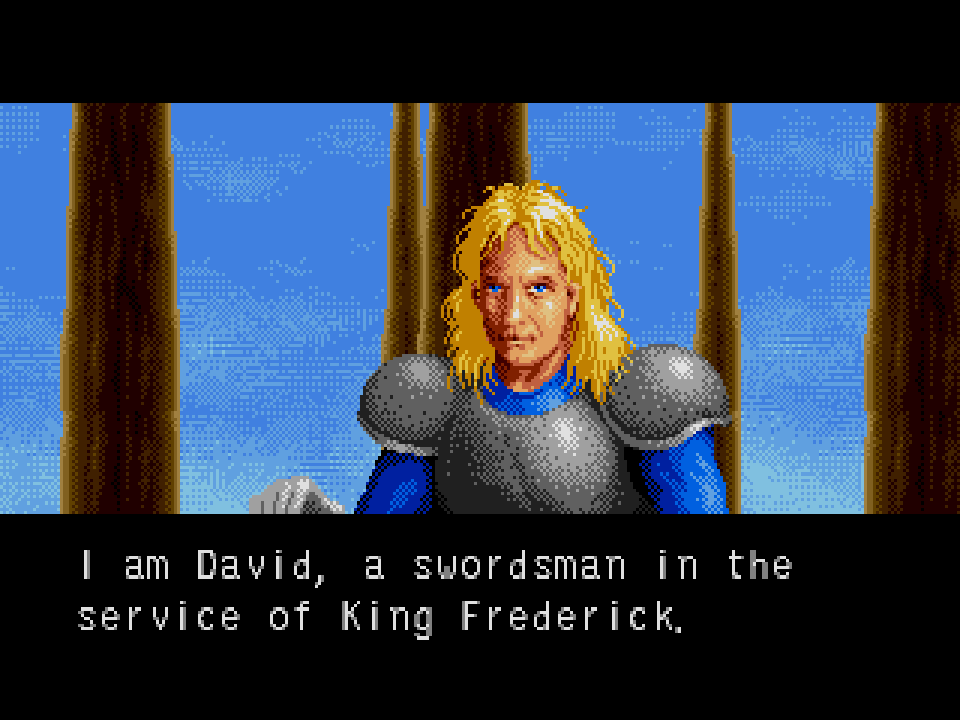
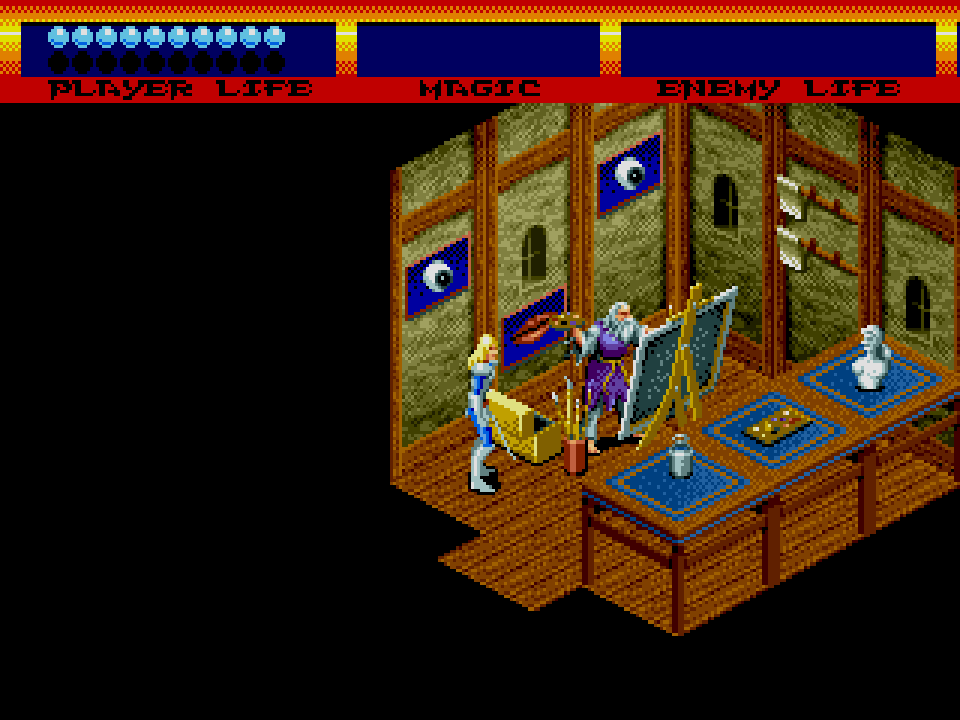
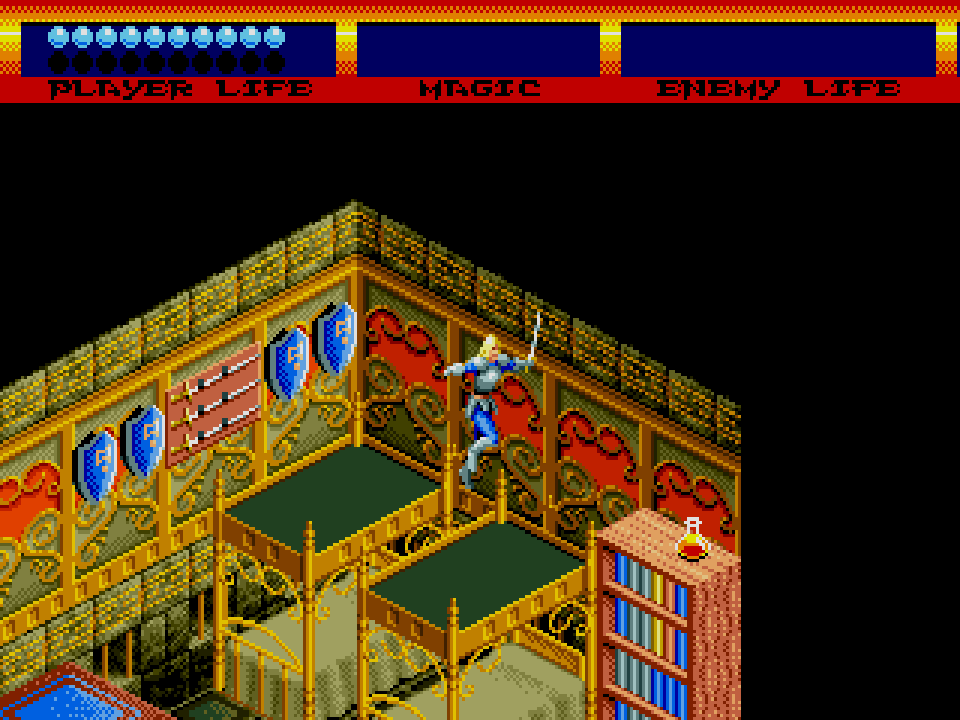
I... really didn't know what to expect from this game, but the start suckers you into thinking it's about as traditional an action-RPG as they come. I might even suggest that the developers were inspired by Will Harvey's The Immortal: there's a similar structure where most of the time you're running past traps, fighting green-skinned humanoids, and solving environmental puzzles. In any given room, you might have to push blocks onto switches, set off explosives in front of locked doors to open them, redirect lasers around to where they're needed, or do one of those annoying sliding block puzzles where you have to push it between several points without getting it trapped in a corner. The rest of the time you're fighting monsters with a combination of melee, jumping attacks, or magic, and you'll have a voiceover tell you to "beat them!" whenever you reach an arena zone you need to clear before you're allowed to move on. The isometric projection occasionally puts in mind the old puzzle-platformers from the C64 era that modern audiences might know fleetingly from the Rare Replay collection, like Knight Lore or Head Over Heels (or Software Creations's Equinox if you want something a little more contemporary to Light Crusader's 1995 release). As a British kid of the late '80s and early '90s I've enjoyed my fair shake of those games, so Light Crusader was more nostalgic than I anticipated.
Treasure's odd sense of humor is best made manifest here with the ways it likes to trick you, following the example of RPGs that'll drop you in a pit if you look at a button funny. You can collect a huge amount of items, mostly food that restores your health (and, somewhat ahead of its time, the game has a QoL toggle that automatically uses healing items in your inventory when your health is low), but quite a lot of the objects you find are effectively useless. Water, for instance, won't heal your health; you need exactly one to give to a thirsty NPC for a necessary hint, but there's far more than one in the game. My inventory started filling up with items I either couldn't use or, in the case of black potions, items I knew would hurt me in some way. On the flipside, you get an item about halfway through the game that lets you use the game's fast travel system - a series of teleporters found on every floor of the dungeon - from anywhere, as well as reasonably common pendants that acted as full resurrection Zelda fairies if you should ever die. I never needed to use save states, which I might do in other games of this vintage for the sake of my own sanity, which may either speak to the game's forward-thinking accessibility or perhaps its choice to err on the easier side.

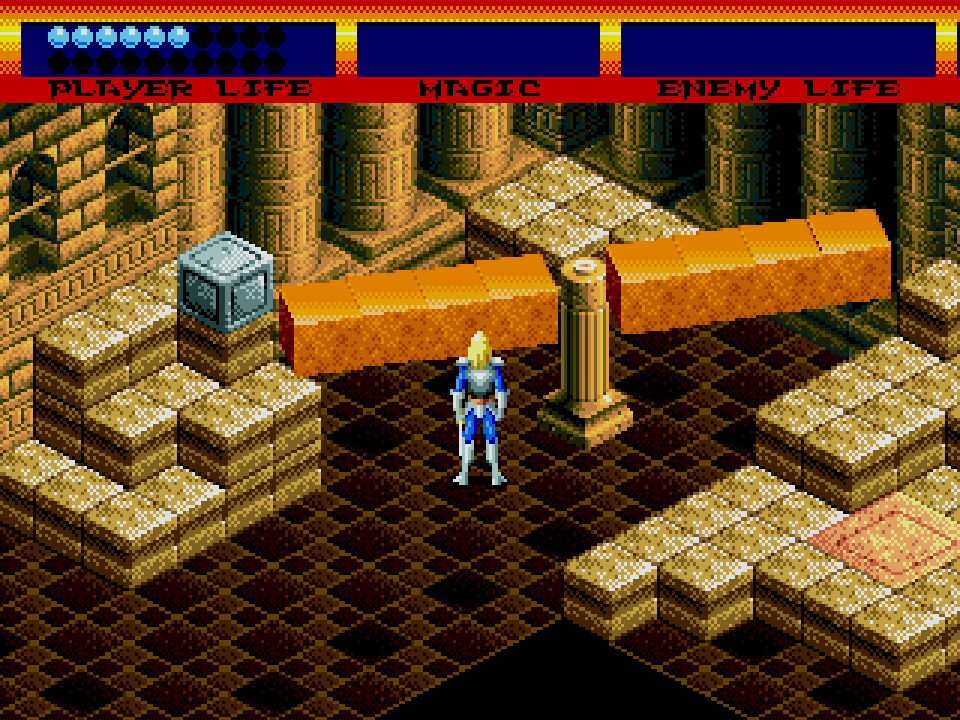
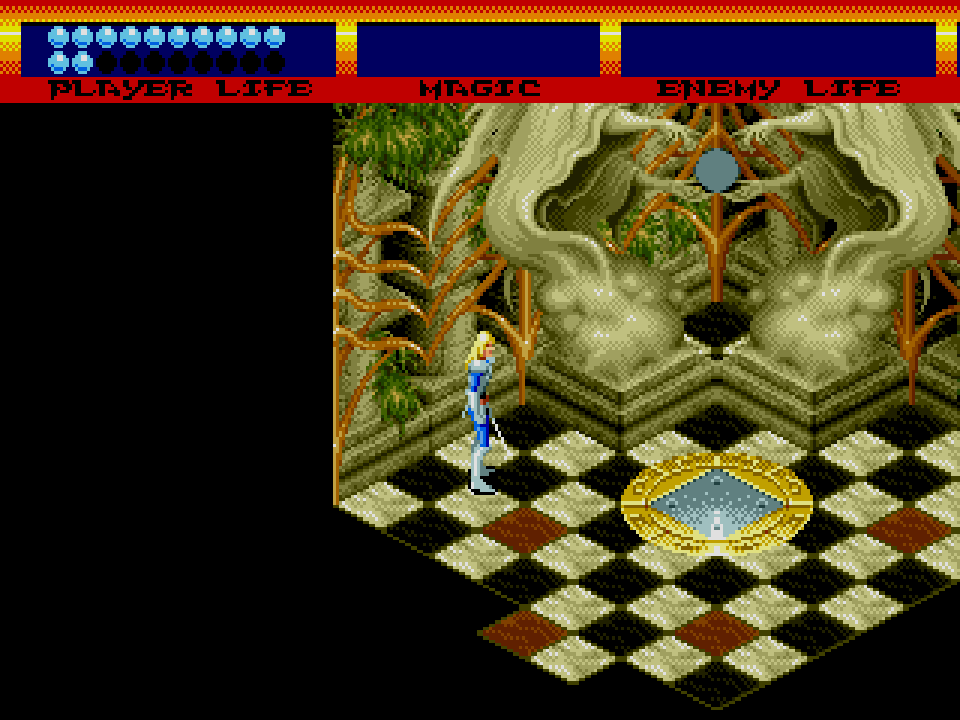
The game's most notable sequence is when you're tasked with entering a crystal on the fifth floor of the dungeon to be whisked away to one of eight self-contained "worlds," at the end of each is a wizard you need to rescue to power up the game's McGuffin sword (and namesake) the Light Crusader. Many of these worlds break from the fantasy thematic genre: there's one where you're fighting WW2 soldiers (including a tank), one where you're dealing with ninjas, and another that's set in a Wild West town full of rootin'-tootin' cowboys. David's combat repertoire mostly involves getting in close and slashing enemies to ribbons, though later swords are able to reflect enemy projectiles; you can take out these soldiers and cowboys by bouncing their bullets right back at them, which isn't something I expected to do in a fantasy RPG. Might also go without saying too that the tank boss was by far the hardest foe I faced in that game; swords don't work so well against armored vehicles, turns out. (I'm just glad the game didn't go full Shinobi and throw a helicopter my way.)
On the whole, Light Crusader doesn't really excel in any one area: its combat can be mashy and it's too easy to get hit when you're trying to get close enough for your sword to reach, though I do like how you can attack simultaneously with an enemy and you both just ping off each other with some sword sparks and no damage done; the puzzles frequently have some imagination behind them, but there's plenty of annoyingly precise ones too (and boy howdy I don't need those Simon Says puzzles to go beyond sequences of ten steps); and the game doesn't surface enough information in-game on what new equipment provides (the game has no stats, though newer weapons are demonstrably more effective) or what the colored potions do. Likewise the magic has you mix four elements in multiple combinations for spell effects (very like Ys V: Ushinawareta Suna no Miyako Kefin, which was out later that same year), but it's hard to say if the spells that need three or four elements to cast are all that much stronger, and the massive inventory screen is often a mess of random junk and keys you no longer need along with the occasional healing item. However, it still has that Treasure brand of unpredictability as they run through the fifty or so concepts they had in mind for the dungeon-crawling genre one after the other. Sometimes I wonder if Treasure hops from one genre to the next just to get all those ideas out of their system. The voice-overs, the bosses made of multiple sprites bolted onto one another, and the silly asides are all very Treasure, assuaging any fears I might've had that they played this one too straight. Not an essential stop for any 16-bit RPG fan, but certainly one distinct enough to be worth a look.
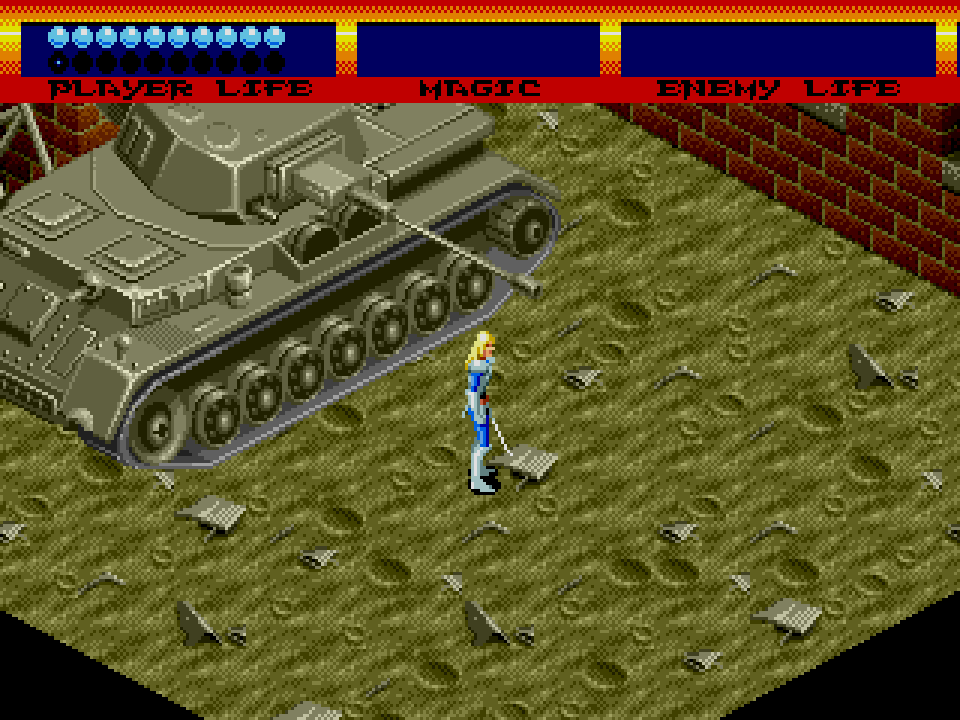
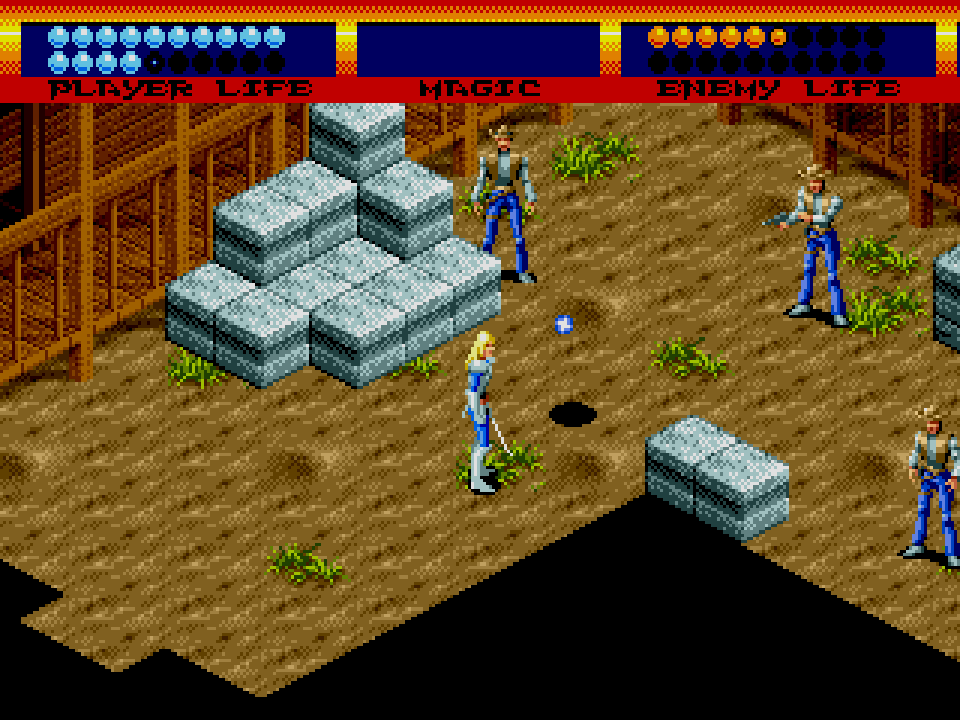
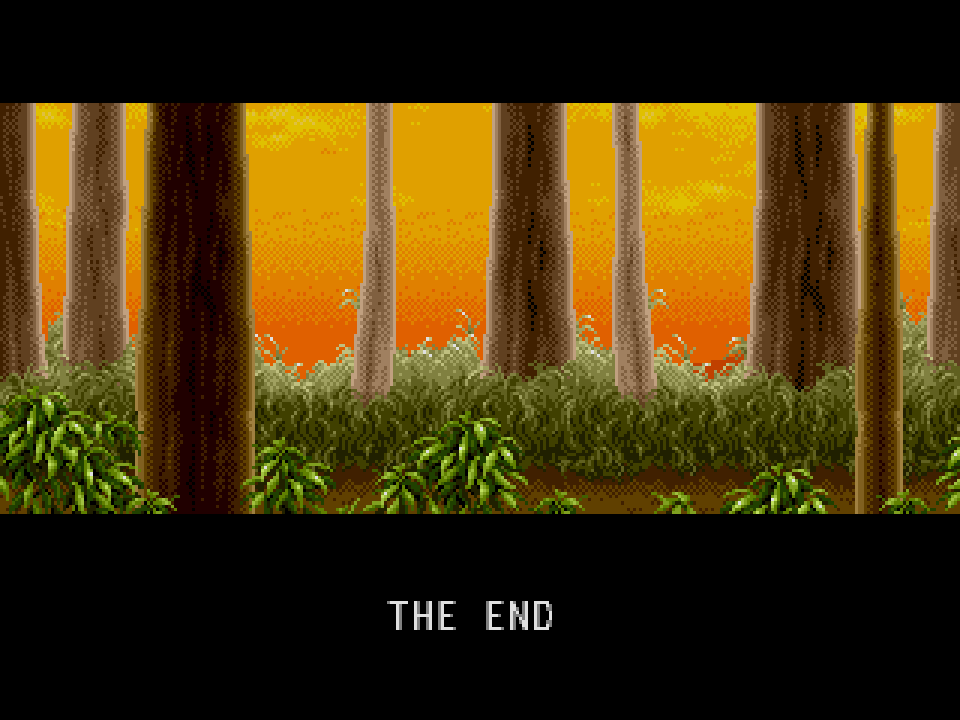
Rating: 4 Ristars out of 5.
Log in to comment